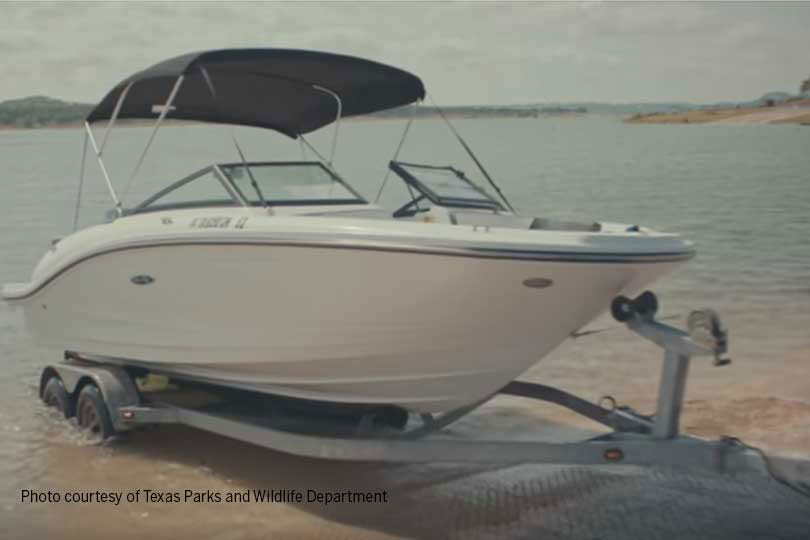As the spring boating season kicks off, Texas Parks and Wildlife Department (TPWD) inland fisheries and law enforcement staff urge boaters to fight back against the aquatic invasive species that threaten Texas lakes.
“There’s no doubt that Texans love their lakes,” John Findeisen, TPWD Brookeland Aquatic Habitat Enhancement team lead, said. “But we also need Texans to help protect their lakes, and the best way to do that is by properly cleaning, draining and drying boats and equipment every time they leave the water.”
In East Texas, the primary threat to aquatic ecosystems and the lake user experience is giant salvinia–a highly invasive, free-floating aquatic fern that can double in size in less than a week. Due to the thick mats it forms, giant salvinia can make fishing, boating, swimming and other water recreation nearly impossible.
“Over the last few months we have seen new giant salvinia infestations pop up at several large reservoirs in East Texas, and the most likely explanation for that spread is that boats and other lake users transported them on their equipment last spring and summer,” Findeisen said. “We can treat these infestations with herbicides and giant salvinia weevils, but the best control is prevention. That’s where boaters come in.”
Boaters need to remove all plants, mud and debris from boats, trailers, vehicles and gear and drain the water from all equipment before traveling to another lake to prevent giant salvinia and other invasive species from spreading further.
While the rapidly spreading giant salvinia remains a top concern for TPWD biologists moving into spring and summer, it isn’t the only threat to Texas lakes.
Since 2009, invasive zebra mussels have spread from North Texas to other lakes in East and Central Texas, too. Zebra mussels can ruin shorelines with sharp shells, impact recreation, hurt native aquatic life, damage boats and clog water intakes.
“There are 14 lakes in Texas with an established, reproducing population of zebra mussels and five where zebra mussels have been detected repeatedly,” Monica McGarrity, TPWD Aquatic Invasive Species team lead, said. “Boaters can help keep that number from growing by taking a few minutes to properly clean, drain and dry everything that touches the water before they leave. Taking just a few minutes for these simple steps can make a huge difference in our efforts to protect and preserve Texas lakes for future generations.”
If you’ve stored your boat on the water at one of the lakes that is “infested” or “positive” for zebra mussels, it may also be infested. Before moving it to another lake, call Texas Parks and Wildlife Department at (512) 389-4848 for guidance on decontamination.
Zebra mussel larvae are microscopic and both adults and larvae can survive for days in or on boats transported from a lake, so boaters should make sure that everything they use is well-drained and dried out for at least a week before visiting another water body. If it can’t be dried completely, wash it with hot, soapy water to reduce the risk of moving zebra mussels.
In addition to harming the recreational experience at lakes and damaging aquatic ecosystems, the transport of aquatic invasive species can result in legal trouble for boaters. In Texas, transporting prohibited invasive species is punishable by a fine of up to $500 per violation. Boaters are also required to drain all water from their boat and onboard receptacles –including bait buckets – before leaving or approaching a body of fresh water in order to prevent the transfer of aquatic invasive species.
For more information on how to properly clean, drain and dry boats and equipment, visit the TPWD YouTube channel for a short instructional video.
To learn more about giant salvinia, zebra mussels and other invasive species in Texas, visit tpwd.texas.gov/InvasiveSpecies.

